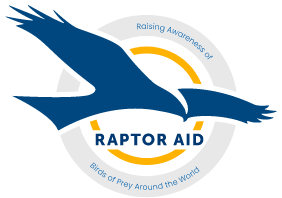Philippine Eagle Foundation - part 1
This post is well over due! Apologies but since coming back from the Philippines it's been back into the deep end with all sorts of things and the UK raptor monitoring season starting. Anyway I have decided to split the Philippine Eagle Foundation (PEF) into two blog posts as I've got lots to share.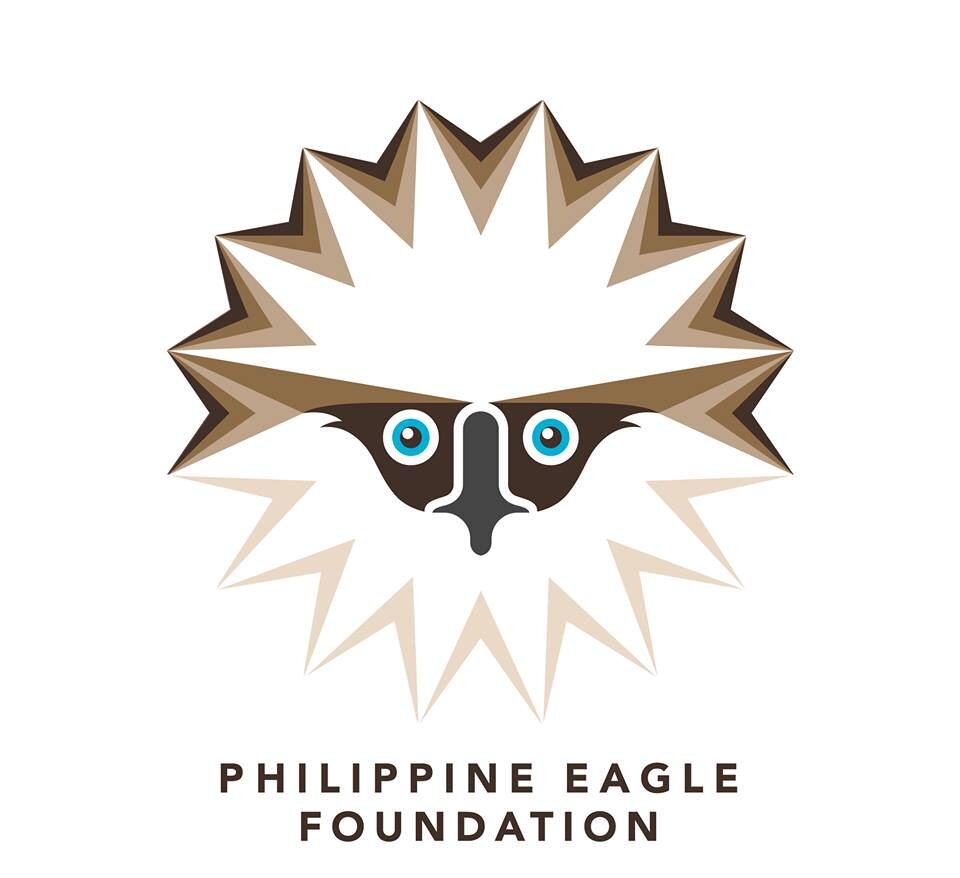 On March 13th I flew out to Davao city in the Philippines to go and spend some time with the PEF at their base the Philippine Eagle Centre in Malagos within the Baguio district about 45 minutes drive from Davao city. The main aims of the trip were to learn first hand the work the foundation do to help save the Philippine eagle, share our experience and knowledge training birds of prey by training staff and birds, take equipment that the foundation struggle to obtain and that will help them with the care of their captive birds and of course to come face to face with an incredible Philippine eagle.The Philippine eagle is one of the largest eagles in the world only found within the forests of the Philippines and sadly is now one of the rarest eagles in the world. There is thought to be only 400 pairs left in the wild and the IUCN redlist classes this bird as critically endangered. There are several issues facing the Philippine eagle including deforestation creating fragmented habitats, shooting and trapping by local villagers to protect livestock and also for fun and in some cases the pet trade. The Philippine Eagle is protected in the wild and in 1995 it was made the national bird of the Philippines. As a kid I remember seeing a picture of a Philippine eagle in a book and being completed absorbed by it, this huge mysterious eagle of the forest with its huge beak, crest of head feathers and stunning blue eyes I knew I had to meet one. When I got older and realised how endangered this species was then I also knew I had to play some small part in helping to save it - Raptor Aid had to go to the Philippines!
On March 13th I flew out to Davao city in the Philippines to go and spend some time with the PEF at their base the Philippine Eagle Centre in Malagos within the Baguio district about 45 minutes drive from Davao city. The main aims of the trip were to learn first hand the work the foundation do to help save the Philippine eagle, share our experience and knowledge training birds of prey by training staff and birds, take equipment that the foundation struggle to obtain and that will help them with the care of their captive birds and of course to come face to face with an incredible Philippine eagle.The Philippine eagle is one of the largest eagles in the world only found within the forests of the Philippines and sadly is now one of the rarest eagles in the world. There is thought to be only 400 pairs left in the wild and the IUCN redlist classes this bird as critically endangered. There are several issues facing the Philippine eagle including deforestation creating fragmented habitats, shooting and trapping by local villagers to protect livestock and also for fun and in some cases the pet trade. The Philippine Eagle is protected in the wild and in 1995 it was made the national bird of the Philippines. As a kid I remember seeing a picture of a Philippine eagle in a book and being completed absorbed by it, this huge mysterious eagle of the forest with its huge beak, crest of head feathers and stunning blue eyes I knew I had to meet one. When I got older and realised how endangered this species was then I also knew I had to play some small part in helping to save it - Raptor Aid had to go to the Philippines!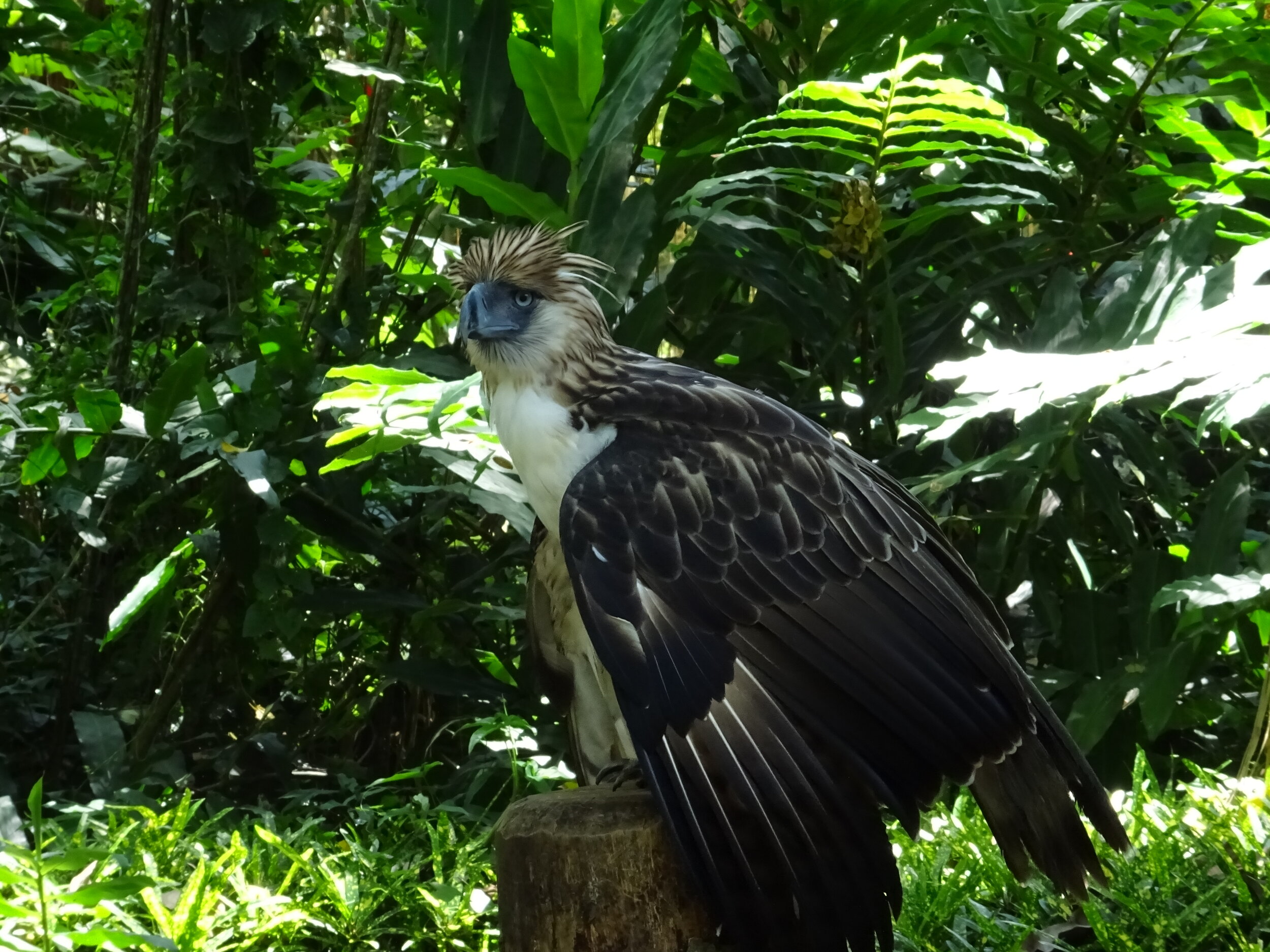 The PEF started life officially around 1987 when the government funding ceased and so a band of staff continued unpaid to get the PEF and its care of the captive eagles up and running. In 1992 with the hatching of Pag-Asa the first ever captive bred eagle sparked an international awareness about the plight of the Philippine Eagle, it is both humbling and a privilege to meet and find that many of the 'originals' from back in 1987 are still heavily involved in the running of the PEF. The first aim of the PEF and the centre was to create a sustainable captive population of the eagle and to find out more about its status in the wild and the problems it is facing. This is also extended to the wider environment working with local communities empowering them to protect the eagles as well as the forests which they both call home.
The PEF started life officially around 1987 when the government funding ceased and so a band of staff continued unpaid to get the PEF and its care of the captive eagles up and running. In 1992 with the hatching of Pag-Asa the first ever captive bred eagle sparked an international awareness about the plight of the Philippine Eagle, it is both humbling and a privilege to meet and find that many of the 'originals' from back in 1987 are still heavily involved in the running of the PEF. The first aim of the PEF and the centre was to create a sustainable captive population of the eagle and to find out more about its status in the wild and the problems it is facing. This is also extended to the wider environment working with local communities empowering them to protect the eagles as well as the forests which they both call home.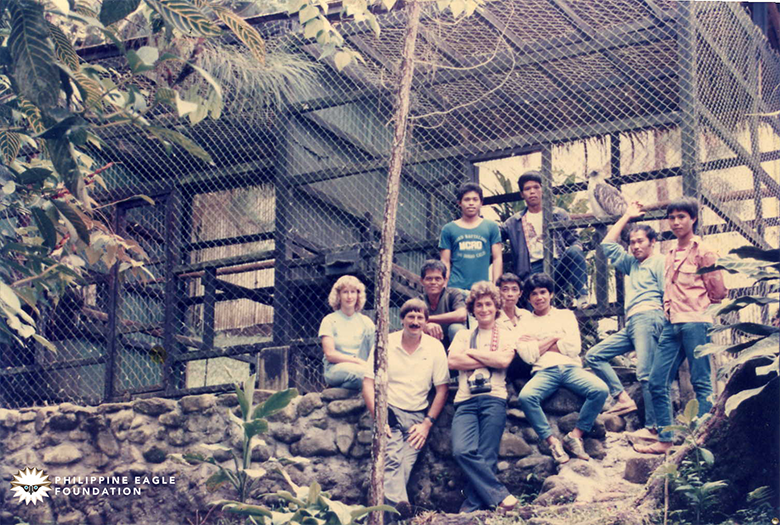 Our visit began back in the UK where Raptor Aid started compiling equipment to take out to the centre to help them with the management of their captive birds including tools for making equipment, leather and identification rings for all their captive birds. One of the main aims for the trip was to use our experience with training captive birds of prey to train members of the education team in handling and training some of their birds for flying. We will come to this in the second part of our blog but first we had to find our feet and look around the centre.
Our visit began back in the UK where Raptor Aid started compiling equipment to take out to the centre to help them with the management of their captive birds including tools for making equipment, leather and identification rings for all their captive birds. One of the main aims for the trip was to use our experience with training captive birds of prey to train members of the education team in handling and training some of their birds for flying. We will come to this in the second part of our blog but first we had to find our feet and look around the centre.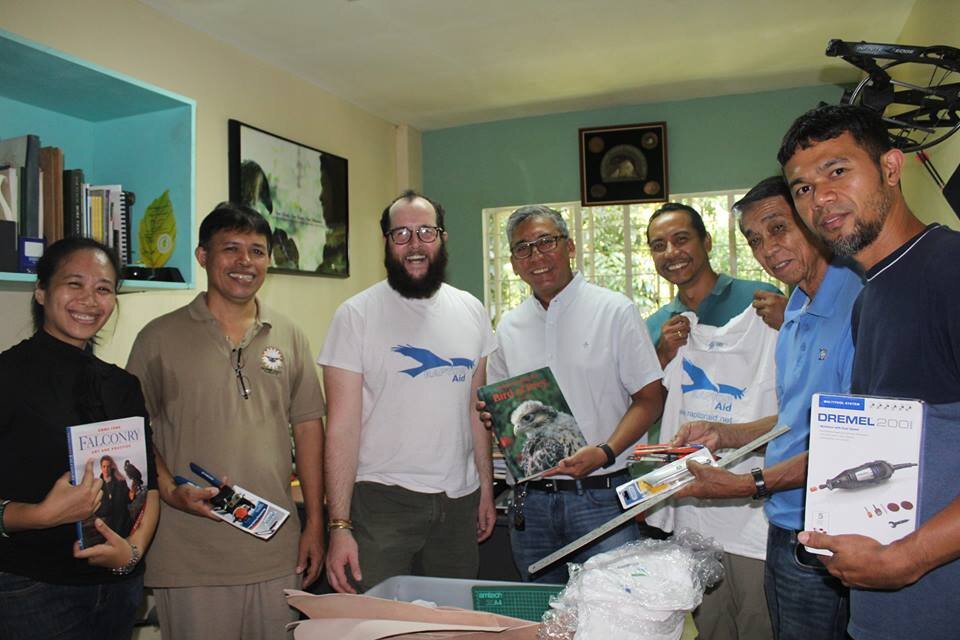 The Philippines is a beautiful country, the city of Davao that I saw was busy and the traffic was in my own words 'Every car for itself' I have never seen anything like it but it just added to the experience. I had a nice hotel (except for a missing toilet seat), I said I would lose weight out there as they didn't really understand vegetarianism (veg doesn't cancel out the meat they still serve you) so I thought my diet would consist of rice until I found a fantastic Pizza/Pasta cafe 5 minutes from my hotel so I think I gained weight!! Dr Jayson Ibanez who I had been liaising with from the start and who oversees all the conservation and research at the PEF came to collect me and it was great to finally meet him, he is one of life's friendly, happy people - it makes a massive difference to have that greeting you off the plane!
The Philippines is a beautiful country, the city of Davao that I saw was busy and the traffic was in my own words 'Every car for itself' I have never seen anything like it but it just added to the experience. I had a nice hotel (except for a missing toilet seat), I said I would lose weight out there as they didn't really understand vegetarianism (veg doesn't cancel out the meat they still serve you) so I thought my diet would consist of rice until I found a fantastic Pizza/Pasta cafe 5 minutes from my hotel so I think I gained weight!! Dr Jayson Ibanez who I had been liaising with from the start and who oversees all the conservation and research at the PEF came to collect me and it was great to finally meet him, he is one of life's friendly, happy people - it makes a massive difference to have that greeting you off the plane!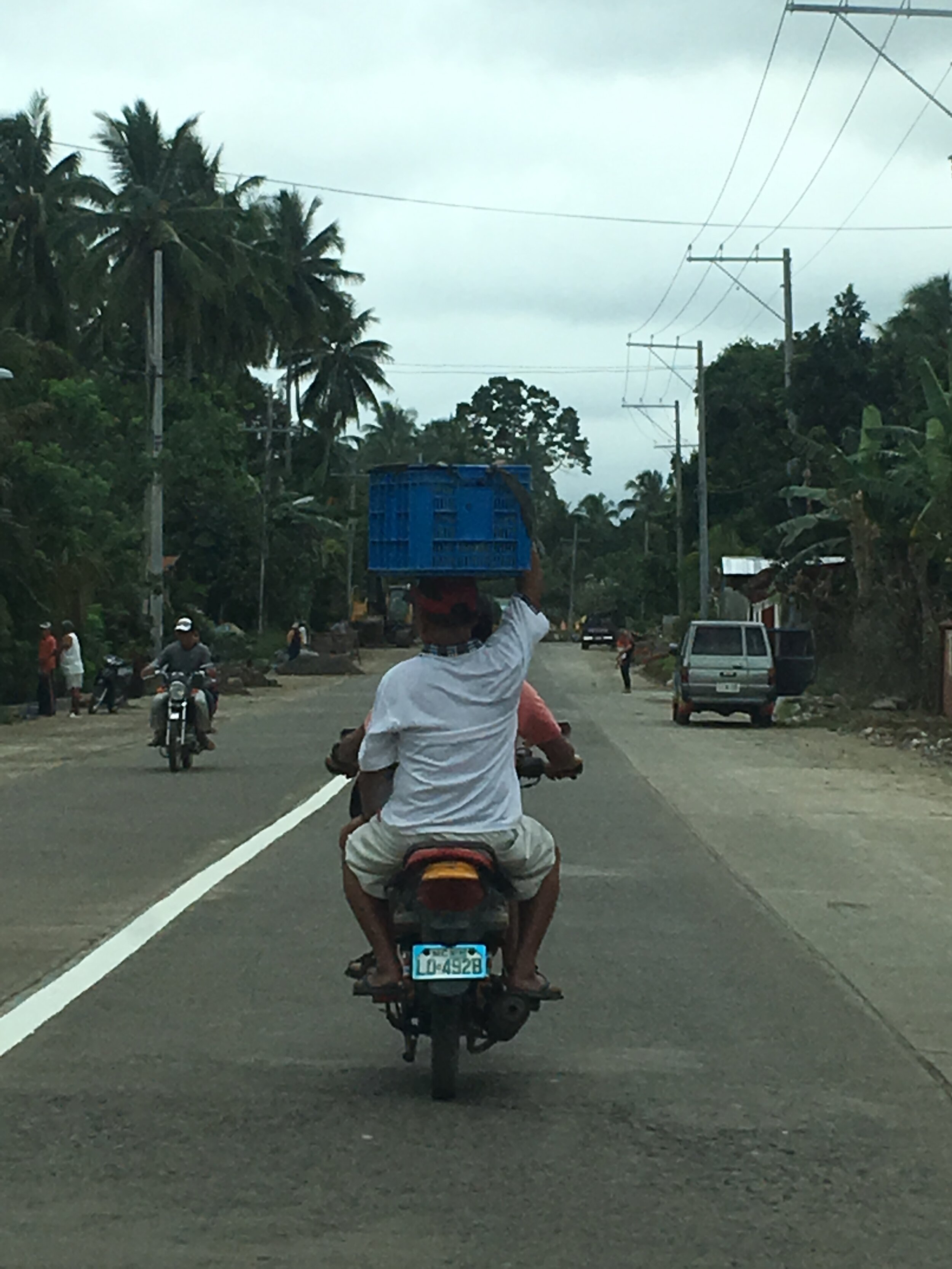 The Philippine Eagle Centre (PEC) is roughly 8 acres in size at the foothills of Mt.Apo and is not only home to a captive breeding population of Philippine eagles for conservation and research but also several other species of raptors and animals. You can find out more about the PEC here.
The Philippine Eagle Centre (PEC) is roughly 8 acres in size at the foothills of Mt.Apo and is not only home to a captive breeding population of Philippine eagles for conservation and research but also several other species of raptors and animals. You can find out more about the PEC here.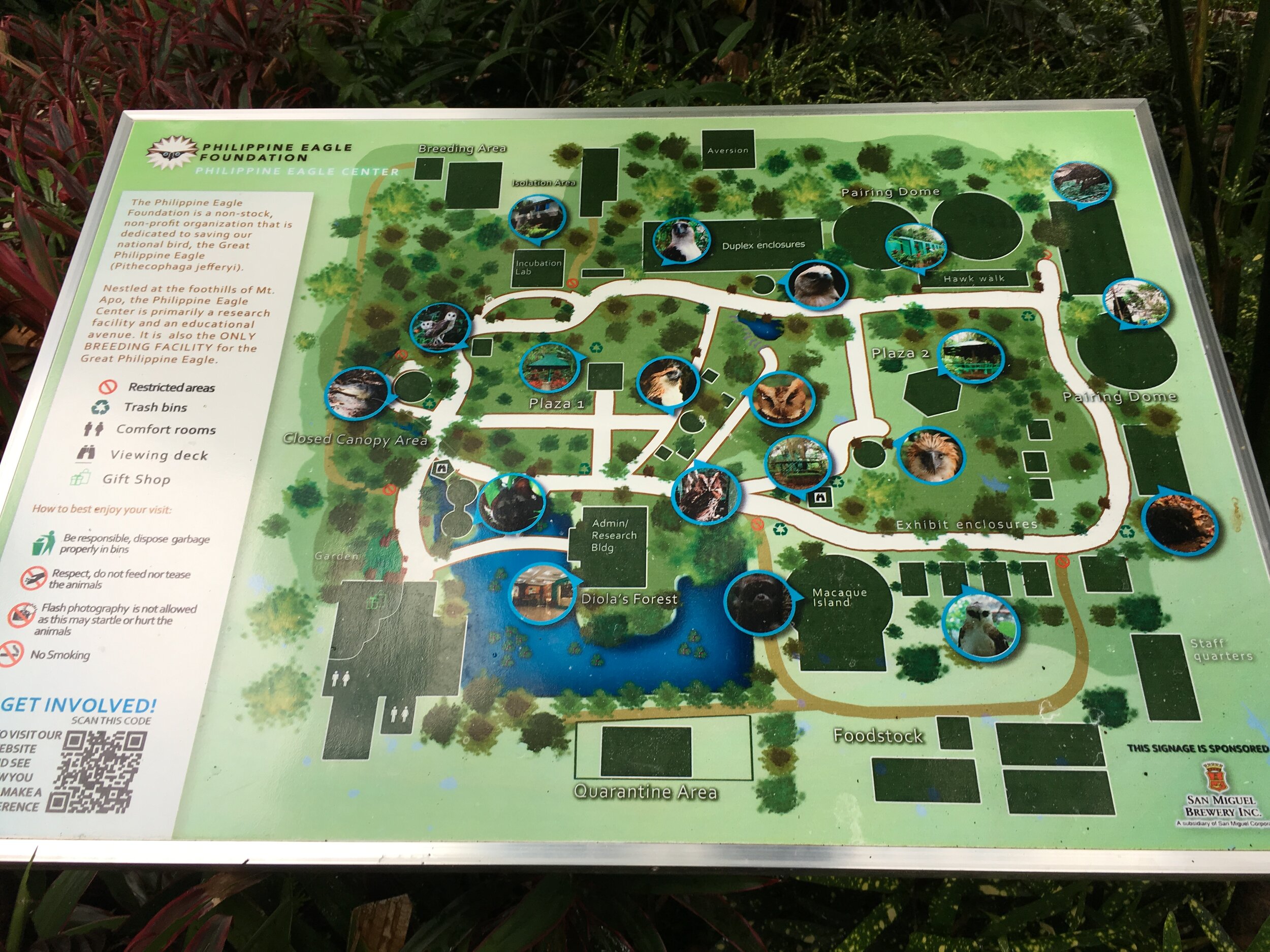 It was straight into training in the first few days, the centre has interns from all fields of education including the vet nurses that I showed the basics of what equipment is used in handling captive birds of prey and then basic health checking of birds. It's always tricky to begin with when you are trying to explain even a basic thing to people who might not speak your language, I have to admit though that it was me who should be embarrassed as most Philippino's spoke good or very good English yet all I could muster was thank you! I gathered the education team with the vet interns and over the first week we caught up as many of the birds possible that needed equipment changing and ID rings fitting, we also took the opportunity to give the birds a quick once over health wise and trim beaks and talons. Some of these birds were already handled by some of the education team during guided tours but my job was to help them get the birds flying over the next week or at least start the process.
It was straight into training in the first few days, the centre has interns from all fields of education including the vet nurses that I showed the basics of what equipment is used in handling captive birds of prey and then basic health checking of birds. It's always tricky to begin with when you are trying to explain even a basic thing to people who might not speak your language, I have to admit though that it was me who should be embarrassed as most Philippino's spoke good or very good English yet all I could muster was thank you! I gathered the education team with the vet interns and over the first week we caught up as many of the birds possible that needed equipment changing and ID rings fitting, we also took the opportunity to give the birds a quick once over health wise and trim beaks and talons. Some of these birds were already handled by some of the education team during guided tours but my job was to help them get the birds flying over the next week or at least start the process.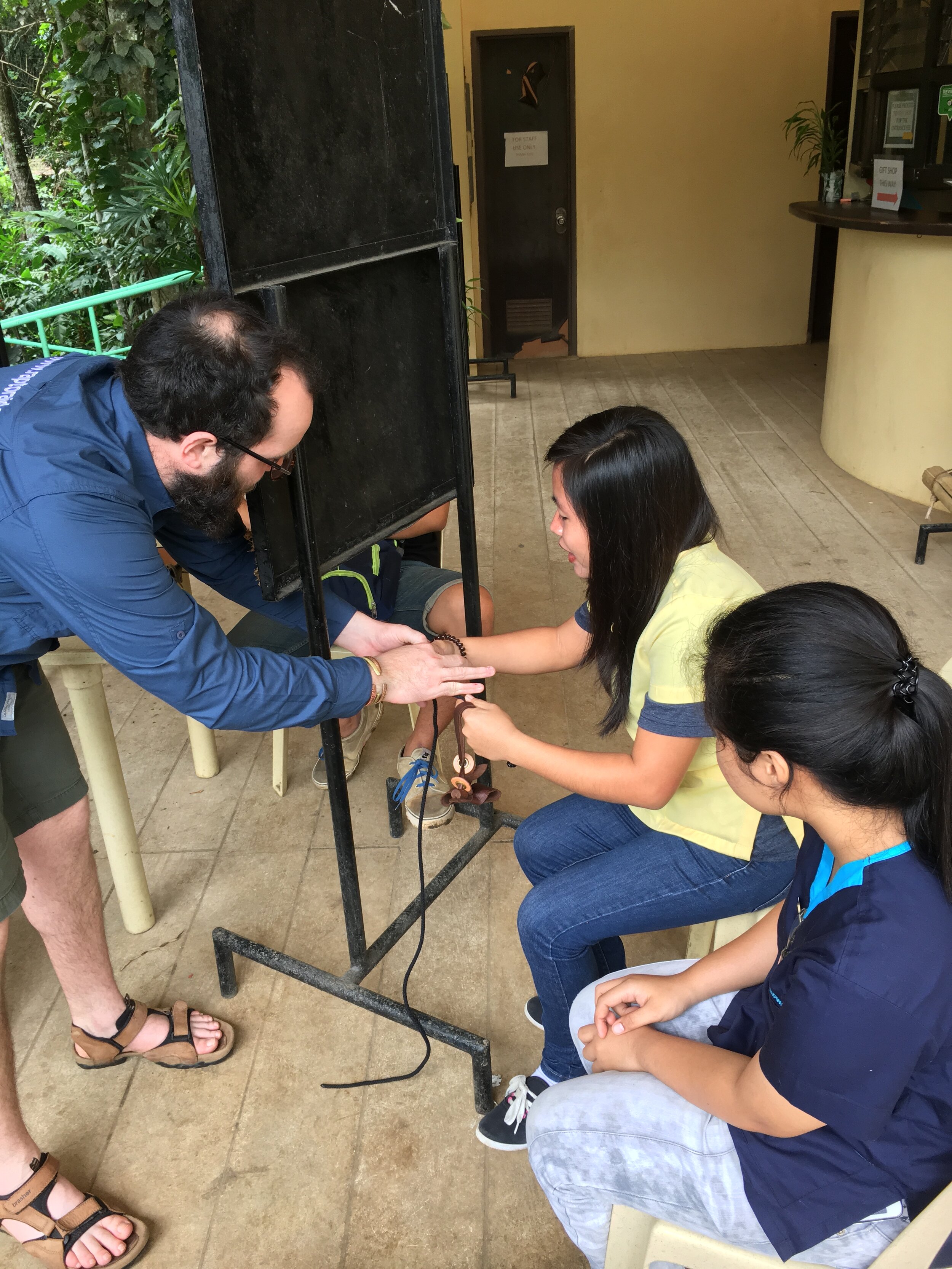
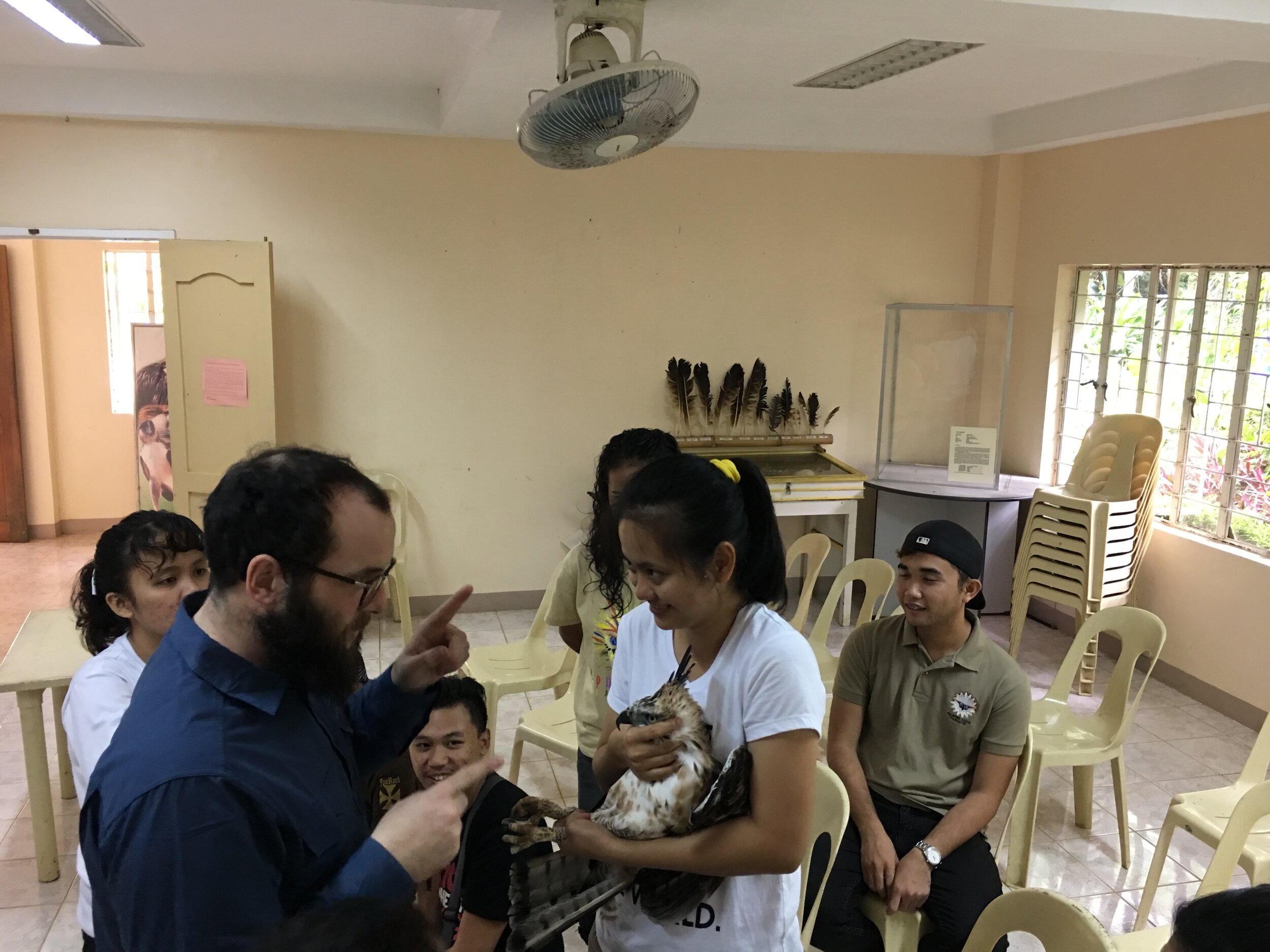 I of course spent a lot of time around the centre exploring and just sitting and watching the birds in aviaries. I have always found it is important to enter anything with an open mind especially other countries and cultures, and this was certainly true whilst at the PEC. The grounds were really natural full of native plants and trees, many of these trees growing through the aviaries especially in the huge domed pairing aviary that contained a male and female Philippine eagle hopefully starting a long lasting pair bond. As I stared up at these birds 60 ft high on a huge limb of a tree I couldn't help but imagine them in exactly the same position in the wild patiently waiting for the next meal. Usually such day dreaming was rudely interrupted by the wailing of the many White Bellied Sea Eagles they had at the centre or the one solitary Grey Headed Fish eagle which had the most comical of calls.
I of course spent a lot of time around the centre exploring and just sitting and watching the birds in aviaries. I have always found it is important to enter anything with an open mind especially other countries and cultures, and this was certainly true whilst at the PEC. The grounds were really natural full of native plants and trees, many of these trees growing through the aviaries especially in the huge domed pairing aviary that contained a male and female Philippine eagle hopefully starting a long lasting pair bond. As I stared up at these birds 60 ft high on a huge limb of a tree I couldn't help but imagine them in exactly the same position in the wild patiently waiting for the next meal. Usually such day dreaming was rudely interrupted by the wailing of the many White Bellied Sea Eagles they had at the centre or the one solitary Grey Headed Fish eagle which had the most comical of calls.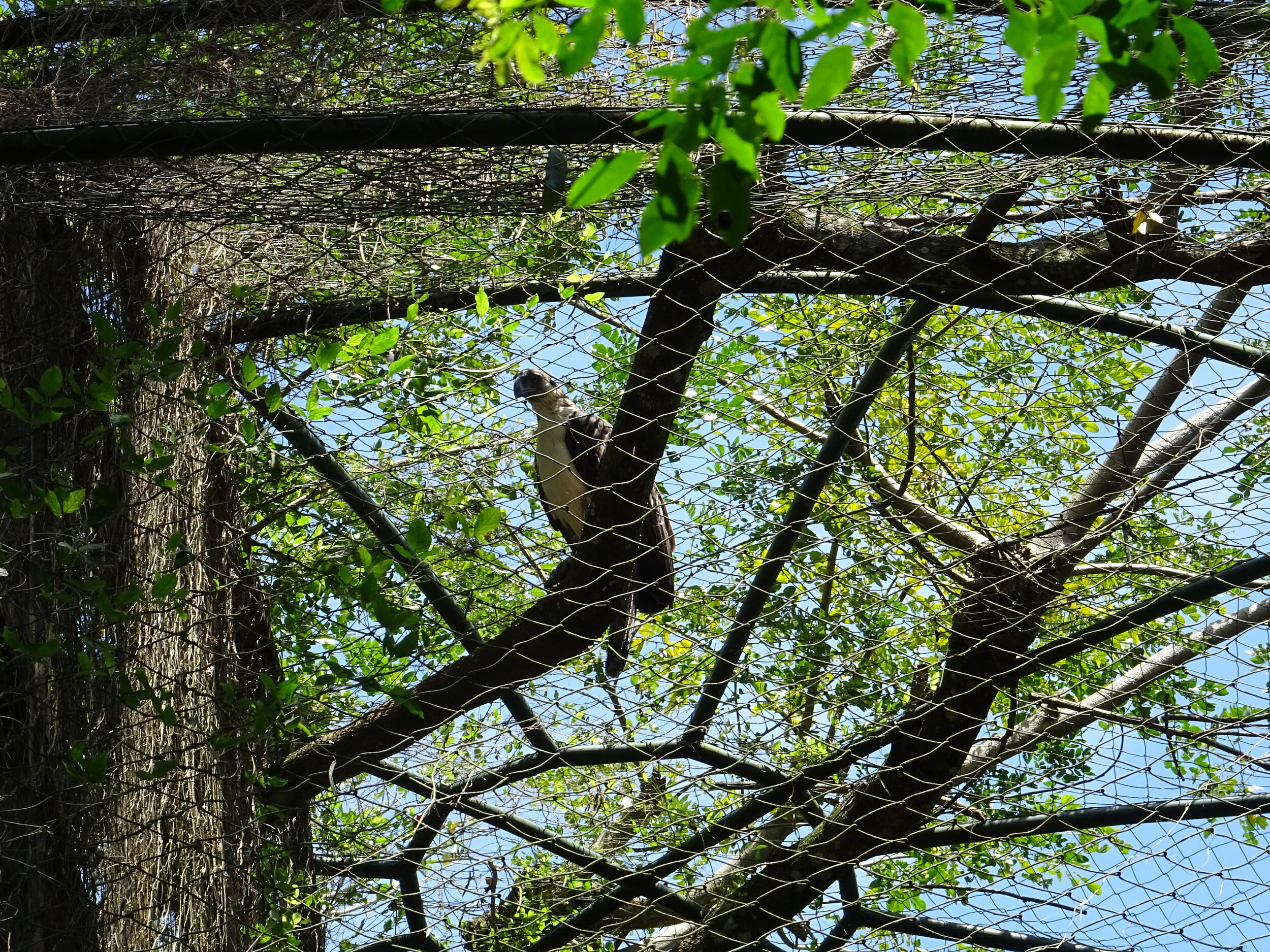 I did of course get to fulfill a boyhood dream and a tick off the bucket list. I had been asked to also help the team retrain Chick 23 or Imbulog the young Philippine Eagle that had previously been trained for a film in collaboration with Cornell University, America. I have to admit when you read and watch videos of the "Monkey Eating Eagle" your mind conjures up all sorts of images of size but Imbulog was nowhere near as big as I thought he would be, don't get me wrong he was still a big eagle weighting 5 KG and a set of feet to catch monkeys and a beak to back them up! It was the eyes though that struck me as the defining feature, they looked straight into you, maybe I'm romanticizing a bit but no other adult raptor has these baby blue eyes, the beak and mane of feathers just accentuate the eyes. I say mane because in birders terminology the back of the head is known as the nape and any extended feathers are known as a crest but although Imbulog could use these feathers as a crest in a warning posture they really did look like a mane of feathers. Nevertheless when I met the breeding females later in the first week the nape/crest/mane/crown whatever you call it was terrifying when fully erect and in territorial display, I'll explain more on that in part 2.
I did of course get to fulfill a boyhood dream and a tick off the bucket list. I had been asked to also help the team retrain Chick 23 or Imbulog the young Philippine Eagle that had previously been trained for a film in collaboration with Cornell University, America. I have to admit when you read and watch videos of the "Monkey Eating Eagle" your mind conjures up all sorts of images of size but Imbulog was nowhere near as big as I thought he would be, don't get me wrong he was still a big eagle weighting 5 KG and a set of feet to catch monkeys and a beak to back them up! It was the eyes though that struck me as the defining feature, they looked straight into you, maybe I'm romanticizing a bit but no other adult raptor has these baby blue eyes, the beak and mane of feathers just accentuate the eyes. I say mane because in birders terminology the back of the head is known as the nape and any extended feathers are known as a crest but although Imbulog could use these feathers as a crest in a warning posture they really did look like a mane of feathers. Nevertheless when I met the breeding females later in the first week the nape/crest/mane/crown whatever you call it was terrifying when fully erect and in territorial display, I'll explain more on that in part 2.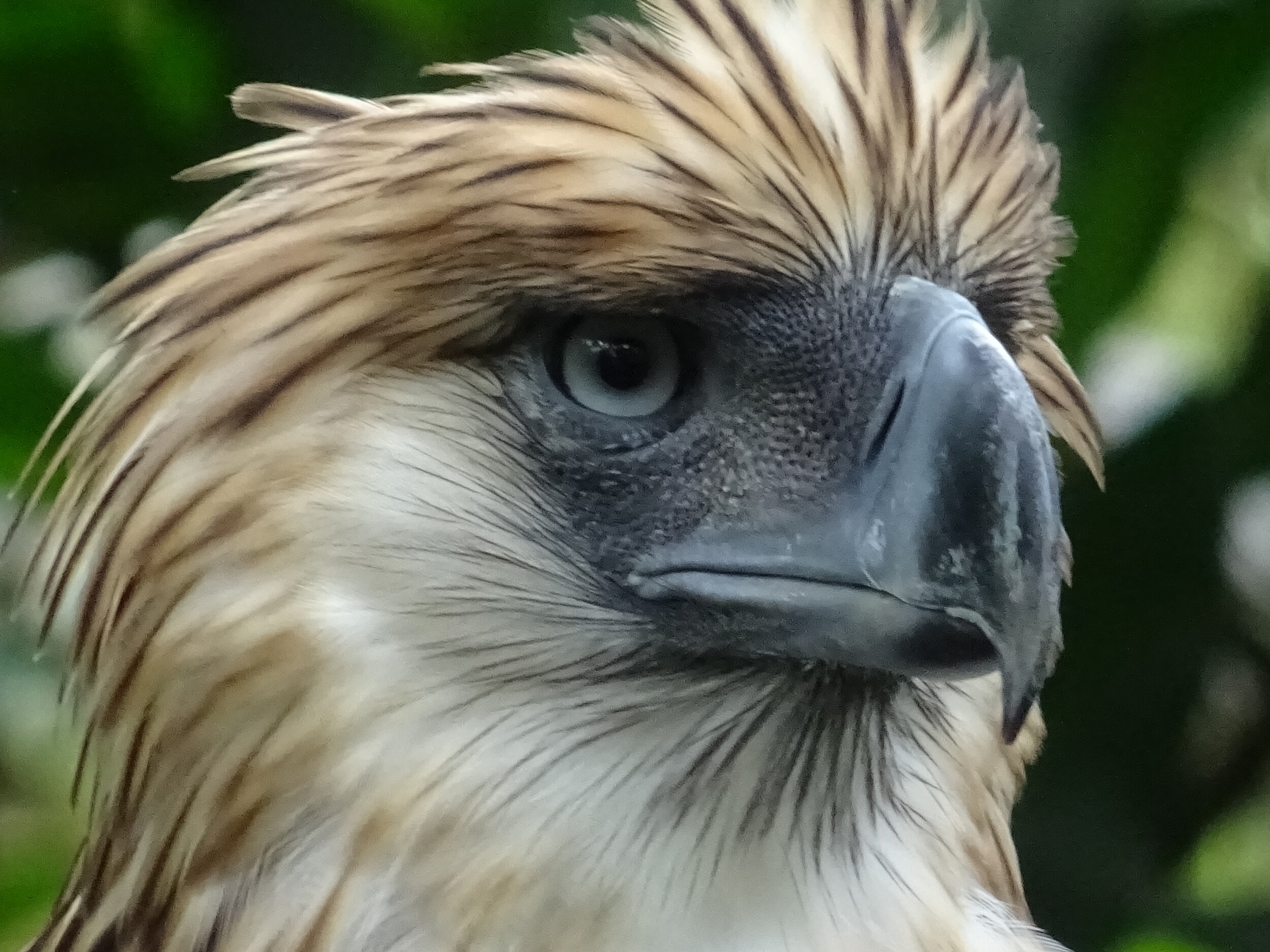 Dominic or Bong as he was more commonly known was training Imbulog and as I myself know from training eagles that one to one bond is incredibly important with this group of birds I tried not to interfere to much in Imbulog's training and just observed Bong and the eagle and offer my experiences and advice where I felt necessary. Once again it is always tricky coming in as an 'expert' (I hate that title) and not treading on people's toes, I could see Bong had a fantastic calm manner around the birds and the more I got to know him I learnt he also had a lot of experience training birds. Imbulog is in good hands and I look forward to sharing his progress soon.
Dominic or Bong as he was more commonly known was training Imbulog and as I myself know from training eagles that one to one bond is incredibly important with this group of birds I tried not to interfere to much in Imbulog's training and just observed Bong and the eagle and offer my experiences and advice where I felt necessary. Once again it is always tricky coming in as an 'expert' (I hate that title) and not treading on people's toes, I could see Bong had a fantastic calm manner around the birds and the more I got to know him I learnt he also had a lot of experience training birds. Imbulog is in good hands and I look forward to sharing his progress soon.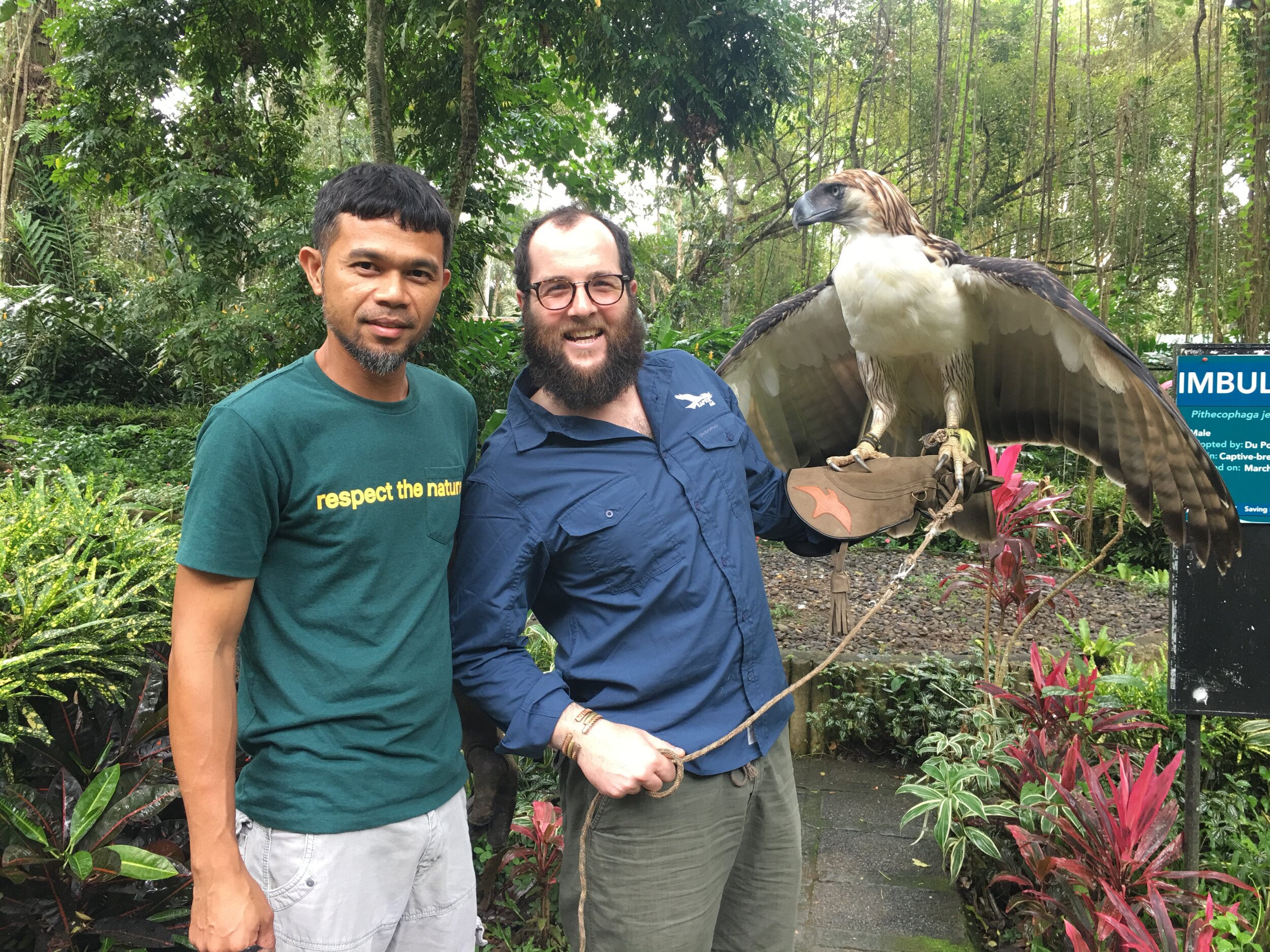 Another part of the trip was to go and talk to Jayson's university class which he teaches weekly, these students come from a range of courses with a common interest in the environment and how it might help their individual degrees. I packed the talk with lots of images of the work Raptor Aid has done and the monitoring work we carry out in the UK. They seemed to enjoy having this big bearded English man talking to them or maybe it was just the beard they were laughing at??One thing I quickly realised during my first week was just how truly friendly and welcoming the country and its people were. The PEF still had members of staff working there from the early days in the 80's but there was never a feeling of hierarchy, the younger or newer members of the team were encouraged and supported and if anything it felt like one big family. I suppose it's understandable though when you all have the same passion and goals in life!Part two coming up..............
Another part of the trip was to go and talk to Jayson's university class which he teaches weekly, these students come from a range of courses with a common interest in the environment and how it might help their individual degrees. I packed the talk with lots of images of the work Raptor Aid has done and the monitoring work we carry out in the UK. They seemed to enjoy having this big bearded English man talking to them or maybe it was just the beard they were laughing at??One thing I quickly realised during my first week was just how truly friendly and welcoming the country and its people were. The PEF still had members of staff working there from the early days in the 80's but there was never a feeling of hierarchy, the younger or newer members of the team were encouraged and supported and if anything it felt like one big family. I suppose it's understandable though when you all have the same passion and goals in life!Part two coming up..............
